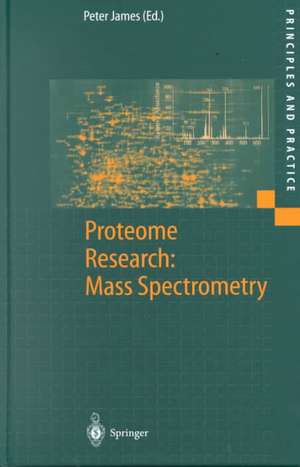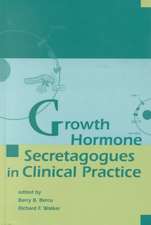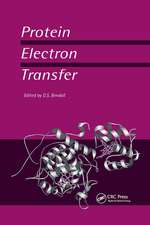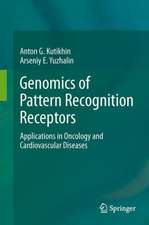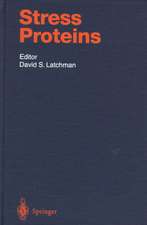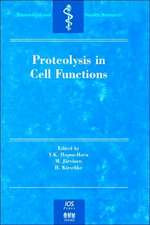Proteome Research: Mass Spectrometry: Principles and Practice
Editat de Peter Jamesen Limba Engleză Hardback – 26 oct 2000
| Toate formatele și edițiile | Preț | Express |
|---|---|---|
| Paperback (1) | 640.55 lei 6-8 săpt. | |
| Springer Berlin, Heidelberg – 26 oct 2000 | 640.55 lei 6-8 săpt. | |
| Hardback (1) | 646.94 lei 6-8 săpt. | |
| Springer Berlin, Heidelberg – 26 oct 2000 | 646.94 lei 6-8 săpt. |
Din seria Principles and Practice
- 15%
 Preț: 638.76 lei
Preț: 638.76 lei - 18%
 Preț: 1398.00 lei
Preț: 1398.00 lei - 18%
 Preț: 946.55 lei
Preț: 946.55 lei - 15%
 Preț: 637.78 lei
Preț: 637.78 lei - 18%
 Preț: 1224.36 lei
Preț: 1224.36 lei - 18%
 Preț: 1229.40 lei
Preț: 1229.40 lei - 5%
 Preț: 362.88 lei
Preț: 362.88 lei - 18%
 Preț: 1209.52 lei
Preț: 1209.52 lei - 18%
 Preț: 953.03 lei
Preț: 953.03 lei - 15%
 Preț: 644.95 lei
Preț: 644.95 lei - 5%
 Preț: 1104.68 lei
Preț: 1104.68 lei - 18%
 Preț: 1545.75 lei
Preț: 1545.75 lei - 15%
 Preț: 639.41 lei
Preț: 639.41 lei - 5%
 Preț: 710.06 lei
Preț: 710.06 lei - 18%
 Preț: 952.89 lei
Preț: 952.89 lei
Preț: 646.94 lei
Preț vechi: 761.10 lei
-15% Nou
Puncte Express: 970
Preț estimativ în valută:
123.83€ • 134.55$ • 104.09£
123.83€ • 134.55$ • 104.09£
Carte tipărită la comandă
Livrare economică 22 aprilie-06 mai
Preluare comenzi: 021 569.72.76
Specificații
ISBN-13: 9783540672555
ISBN-10: 3540672559
Pagini: 300
Ilustrații: XXI, 274 p.
Dimensiuni: 155 x 235 x 22 mm
Greutate: 0.6 kg
Ediția:2001
Editura: Springer Berlin, Heidelberg
Colecția Springer
Seria Principles and Practice
Locul publicării:Berlin, Heidelberg, Germany
ISBN-10: 3540672559
Pagini: 300
Ilustrații: XXI, 274 p.
Dimensiuni: 155 x 235 x 22 mm
Greutate: 0.6 kg
Ediția:2001
Editura: Springer Berlin, Heidelberg
Colecția Springer
Seria Principles and Practice
Locul publicării:Berlin, Heidelberg, Germany
Public țintă
ResearchCuprins
1 Mass Spectrometry and the Proteome.- 2 Basics of Triple-Stage Quadrupole/Ion-Trap Mass Spectrometry: Precursor, Product and Neutral-Loss Scanning. Electrospray Ionisation and Nanospray Ionisation.- 3 The Basics of Matrix-Assisted Laser Desorption, Ionisation Time-of-Flight Mass Spectrometry and Post-Source Decay Analysis.- 4 Data-Controlled Micro-Scale Liquid Chromatography — Tandem Mass Spectrometry of Peptides and Proteins: Strategies for Improved Sensitivity, Efficiency and Effectiveness.- 5 Solid-Phase Extraction-Capillary Zone Electrophoresis-Mass Spectrometry Analysis of Low-Abundance Proteins.- 6 Protein Identification by Peptide-Mass Fingerprinting.- 7 Protein Identification by SEQUEST.- 8 Interpreting Peptide Tandem Mass-Spectrometry Fragmentation Spectra.- 9 Automated Interpretation of Peptide Tandem Mass Spectra and Homology Searching.- 10 Specific Detection and Analysis of Phosphorylated Peptides by Mass Spectrometry.- 11 Glycoproteomics: High-Throughput Sequencing of Oligosaccharide Modifications to Proteins.- 12 Proteomics Databases.- 13 Quo Vadis.
Caracteristici
The first book to extensively cover the applications of mass spectrometry to proteome research
